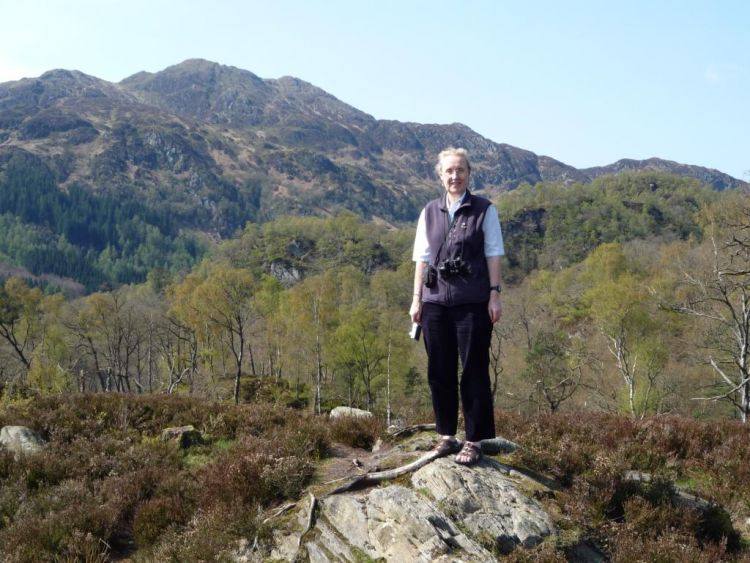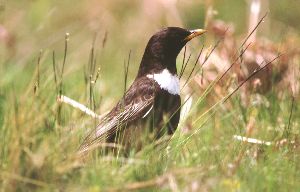Taking part in Atlas - A volunteer's view
Anne Reid – Angus
Right from the start I submitted Roving Records, on the basis that someone had to record the common birds and I knew I could do that reliably. I thought about TTVs (Timed Tetrad Visits) but didn't have the confidence to ask for one back at the start of the project. I also, mistakenly, thought that there would be plenty of other volunteers to do TTVs.
I kept on with my Roving and, by the end, had submitted records from Inverness to Cambridge via Kintyre and Cork, with a lot of places inbetween, eventually around 400 different tetrads. In 2009 I ventured into Timed Tetrad territory and found that it wasn't as difficult as I had imagined, and that there were still rather large gaps in my local patch of Angus. It all gathered momentum, especially after my husband gave me an Atlas Curlew sponsorship for Christmas - one of the best presents I have ever received.
My most arduous day was when I got a request, two days before Christmas 2010, to do two 'insurance' TTVs where there was uncertainty about whether they would otherwise be completed before the end of the last winter early period. After the heavy snow the roads were not good and the forecast suggested that Boxing Day would be the only option - at least the roads were quiet. The hardest part was finding somewhere safe to park when all the verges were deep in snow and with unknown hidden hazards. Despite the snow and our very short day length I did manage both TTVs with good sturdy wellies and a lot of slip-sliding on narrow rural roads.
Another result of the snow was one of my birding highlights - a Barn Owl being chased by a Crow in broad daylight. I just hope the owl found enough food and survived - I was towing a sledge-full of shopping back from the supermarket, also in survival mode.
At the end of February I recorded two flocks of Twite in the tops of tall trees, presumably preparing to migrate westwards to breed.These were new to me and the sound they made was unmistakeable but it took me some time before I tracked down a recording to confirm my identification. Near one of these Twite flocks I crept up on a field of Pink-footed Geese, under cover of some bushes, to count them, scanning the whole time to see if any other species were amongst them. I got an estimate of 300 Pink-feet before they spotted me and took off, leaving behind eight Greylags which I had not noticed amongst their flightier relatives.
In 2011 there seemed to be a population explosion of Whitethroats everywhere I went, especially noticeable early in the year when they were singing. In one tetrad I had recorded an agitated Whitethroat at a field corner as I walked past on the way out. On my return I stopped and took a step closer to the hedge to see if I could see the bird. The result was a mini explosion of newly fledged youngsters as they scattered in all directions, though none of them very far away. I left them in peace with a big smile on my face.
Summer highlights included my first ever Quail, sadly only heard in the undergrowth, and migrating Whimbrel twice in the same week in early May on the coast near Arbroath. I was also lucky enough to record a singing Corn Bunting on both early and late visits in one coastal tetrad and saw my first ever Ring Ouzels at the end of July 2011 in the Perthshire hills. Our part of the world is still blessed by Tree Sparrows and I found them many times I was out, though usually clustered around a single farm or house where food was available.
All this activity has kept me fit and given me some memorable birding moments. I have learned a lot and will have a huge gap in my life now that Atlas recording is finished. I give thanks for a very tolerant husband and family for putting up with my expeditions.
What's your Atlas story? Email ieuan.evans@bto.org and help us capture the human story of BirdAtlas 2007-11.

